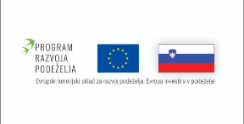Bird conservation
Since its establishment, Goričko Nature park Public Institute, together with other governmental and non-governmental organizations, has been implementing measures for the conservation of birds. You can also help birds by installing nest-boxes, preserving meadows, hedges and high-trunk orchards.
1. Installing artificial nesting bases for white stork
White storks in the past build huge nests on chimneys or on roofs ridges of the houses. Today, they build their nests mostly on electrical poles. This is not good for stork not for the locals. Nesting on unsecures wires can cause the deaths of stork due to electic shock in case of unintentinal contact with wires and as result cause power outages. To prevent such events, Goričko Nature park Public Institute together with The Institute of the Republic of Slovenia for Nature Conservation and electricity distributors (Elektro Maribor) for years now installs artifical nesting bases, which are installed on poles so that the nest raises above the wires. Since a storks nest can weigh more than 500 kg and can be more than 1 m high, it is essential that the nesting base is strong (it must withstand a weight of up to 700 kg). Additional the wires are protected with insulators.
2. Installation of nest-boxes for cavity nesting birds
Due to the lack of natural cavities as a result of the disappearance of high-trunk fruit trees, the removal of hedges and old dead trees, the secondary cavity nesting birds have troube to find suitable cavities for nesting. Cavities can be of natural origin as a result of the activity of wood-decay fungus or can be excavated by primary cavity nesting birds, mainly by woodpeckers, for their survival and reproduction.Cavities are occupied by many different animals - bats, dormice and birds of all sizes. Smaller cavities and cracks are occupied by smaller birds such as the great tit, blue tit, tree sparrow, wryneck, collared flycatcher and nuthatch. Larger cavities are occupied by starling, redstart, hoopoe, Scops owl, roller, little owl and and stock dove. Goričko Nature park Public Institute together with non-governmental organizations and volunteers, has installed more than 350 nest-boxes for various species since 2009, predomently for hoopoe and Scops owl.The occupancy of nest-boxes is increasing each year.

3. Installation of hunting poles
In order to improve the conditions for predatory birds which search for prey from elevated perches - birds of prey, owls, shrikes etc. Goričko Nature park Public Institute together with volunteers, in 2013 began to install hunting poles for birds, primarily intended to improve the hunting conditions for the roller. Hunting poles compensates for the lack of solitary trees and hedges within more intensive agricultural landscape. We are continuing with the installation of additional poles to improve the conditions for the Scops owl within the Gorička krajina project. Hunting poles are also a welcome structure in gardens and orchards, as they attract birds that prey and owl which are the main predators of vermin like mice, voles and molecrickets.

4. Nature-friendly use of meadows, preservation of hedges and high-trunk orhards
The key for a long-term conservation of birds is to preserve their habitats - especially keeping the foraging habitats in good condition. Since farmland birds mostly feed on insects, the key is to preserve extensive meadows with a large variety and abundance of insects. Hedges are also the habitat of insects like grasshoppers, but at the same time also an important breeding site for some species of birds. Preservation of high-trunk orhards is important as an important breeding habitat for cavity nesting birds and also as a important foraging habitat for green woodpecker, hoopoe, Scops owl and wryneck. Regular rejuvenation pruning with removal of the white mistletoe is the key for their long-term preservation. Old and dead trees should be constantly replaced with new seedlings of tall fruit varieties.

5. Winter bird feeding
Winter feeding is the most popular and widespread form of helping birds. At this point it is crucial thar We follow some general guidelines. We feed the birds with sunflower seeds, cereals, corn, hazelnuts or walnuts and fruit. Apples tend to attract trushes like blackbird or fieldfare. Bread and other processed food should not be fed to birds. The bird feeder should be cleaned regulary to preven the spread of parasites and diseases. The bird feeder should be positioned in position that enebles the access of predators like cats and martens. The best way is to place it on a pole or in some exposed place without the immediate vicinity of trees, where domestic cats could hide and prey on birds. Some bushes in vicinity are a good hide for small birds against predators like sparrowhawk.

6. Preservation of natural habitats of birds
Conservation of natural forest with sufficient amount of dead trees is important for a lot of forest birds that feed on insects living in decay wood. Woodpeckers inhabit such forests. Big, old trees are a nesting place for black stork and different birds of prey - buzzard, honey buzzard and goshawk. Natural preserved forest streams and oxbow are the main foraging habitat of black stork. Natural preserved riverbanks with tall river walls are the breeding habitat of kingfisher. Preserved reeds along rivers and lakes are inhabited by different species of warblers, rails, crakes and ducks.








